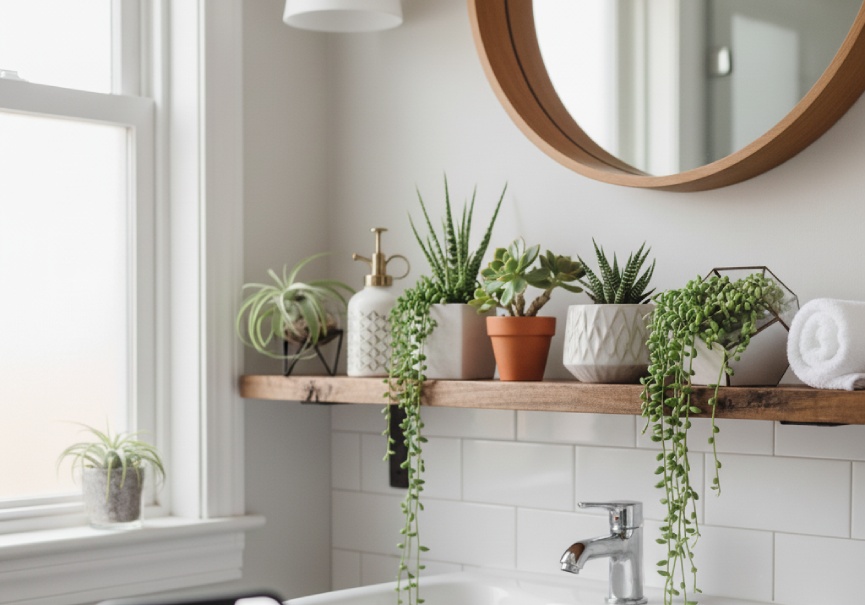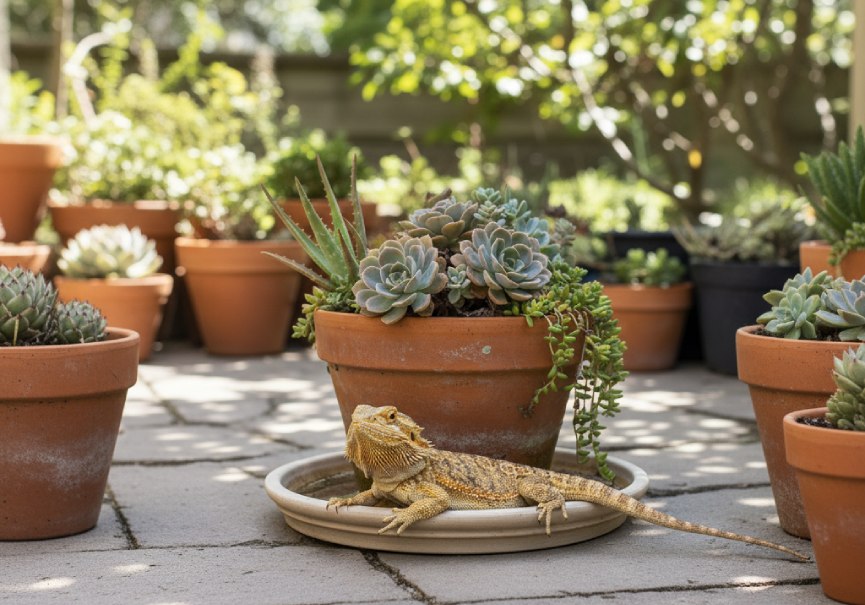How to Water Succulents: A Complete Guide for Beginners and Enthusiasts

Introduction
Succulents have earned their place as some of the most beloved plants in modern homes and gardens. Their stunning shapes, vibrant colors, and low-maintenance nature make them ideal for everyone — from busy professionals to passionate collectors. But while succulents are famously easy to care for, the most common mistake even experienced plant owners make is overwatering.
If you’ve ever wondered how to water succulents properly, you’re not alone. Finding the right balance between too much and too little water can be tricky, especially because succulents store moisture in their leaves, stems, and roots.
This comprehensive guide will walk you through everything you need to know about watering succulents — from understanding their natural environment to recognizing the signs of dehydration and overwatering.
Understanding How Succulents Store Water
Succulents are nature’s masters of survival. Native to arid regions like deserts and rocky landscapes, they’ve adapted to thrive with minimal rainfall. Their thick, fleshy leaves act as reservoirs, allowing them to store water for long periods.
Because of this, succulents don’t need frequent watering; instead, they rely on their internal moisture supply. Overwatering disrupts this balance, leading to root rot and plant decline.
So when it comes to succulent care, remember: less is often more.
How Often Should You Water Succulents?
There isn’t a one-size-fits-all answer, because the ideal watering frequency depends on several factors including climate, soil type, container size, and whether your succulents are indoors or outdoors.
Here’s a general guideline:
- Indoor Succulents: Water every 2–3 weeks, allowing the soil to dry out completely between sessions.
- Outdoor Succulents: Water every 1–2 weeks during warm months, and less frequently during cooler or rainy seasons.
A simple rule of thumb:
Check the soil. If the top 2 inches are completely dry, it’s time to water. If it’s still damp, wait a few more days.
Signs of Overwatered Succulents
Overwatering is the most common reason succulents die. Because their roots are sensitive to excess moisture, they quickly develop rot if left in soggy soil.
Watch for these signs:
- Mushy, translucent leaves
- Yellowing or black spots near the base
- Soft stems that easily collapse
- A foul odor coming from the soil (indicating root rot)
If you notice these symptoms, remove the plant from its pot, trim off rotted roots, and let it dry out for a few days before replanting in fresh, well-draining soil.
Signs of Underwatered Succulents
While succulents prefer dryness, they still need water to thrive. When neglected for too long, you’ll see the opposite problem: dehydration.
Common symptoms of underwatering:
- Wrinkled or shriveled leaves
- Dry, crispy edges
- Slow or stunted growth
- Leaves dropping prematurely
The good news? Underwatered succulents are easier to save than overwatered ones. Simply water them thoroughly and resume a more consistent watering schedule.
The Right Way to Water Succulents
The “soak and dry” method is widely regarded as the best watering technique for succulents. It mimics the natural desert environment, where plants experience rare but deep rainfalls.
Step-by-step:
- Water deeply: Pour water directly into the soil until it runs out of the drainage holes.
- Let it drain completely: Never let the pot sit in standing water.
- Wait until the soil dries out: Only water again once the soil feels bone-dry to the touch.
Pro Tip: Always water the soil, not the leaves. Moisture sitting on leaves can cause rot or fungal issues.
Choosing the Right Soil and Pot
The success of your watering routine depends as much on soil and container choice as on frequency.
Soil:
Succulents need fast-draining soil. A standard potting mix holds too much water, which can suffocate roots.
Opt for:
- A cactus/succulent mix, or
- DIY blend: 2 parts potting soil + 1 part coarse sand + 1 part perlite or pumice.
Pot:
Choose containers with drainage holes. Terracotta pots are ideal because they’re porous, allowing water to evaporate and preventing soggy soil. Avoid glass containers or sealed terrariums unless you’re highly experienced with moisture control.
Watering Indoor vs. Outdoor Succulents
Indoor Succulents
Indoor plants receive less sunlight and airflow, so the soil takes longer to dry. Water sparingly and monitor humidity levels. Use a watering can with a narrow spout to target the base of the plant without splashing the leaves.
Outdoor Succulents
Outdoor succulents face sun, wind, and temperature changes, which cause the soil to dry faster. During summer, water more frequently (every 7–10 days). In winter, cut back drastically sometimes; once a month is enough.
Seasonal Watering Guide
Succulent watering needs change throughout the year:
- Spring: Growth season — increase watering frequency slightly.
- Summer: Peak growth — water when the soil dries out completely.
- Autumn: Gradually reduce watering as growth slows.
- Winter: Dormant period — minimal watering needed, especially for indoor succulents.
Remember, different species have unique dormancy patterns. For instance, Aloe and Haworthia may rest in summer, while Echeveria and Sedum slow down in winter. Adjust accordingly.
How to Water Succulent Arrangements and Terrariums
If your succulents are grouped in decorative containers without drainage holes, you’ll need to be extra cautious.
Tips:
- Use a spray bottle or syringe to control water amounts.
- Water very lightly, just enough to moisten the roots, not saturate the soil.
- Always wait for the soil to dry completely before watering again.
For terrariums, choose open containers with good airflow to prevent mold and excess humidity.
Water Quality Matters
Succulents are sensitive to chemicals and salts in water. Tap water can sometimes leave white mineral deposits on the soil or leaves.
For best results:
- Use filtered, distilled, or rainwater whenever possible.
- Avoid softened water it often contains sodium, which harms roots.
Common Watering Mistakes to Avoid
1. Watering on a schedule instead of by need
Always check soil moisture first.
2. Using non-draining pots
Water will stagnate and cause root rot.
3. Spraying the leaves instead of soaking the soil
Leads to fungal issues.
4. Not adjusting for seasons
Overwatering in winter is a common killer.
5. Neglecting newly planted succulents
Freshly potted plants need time to establish roots before heavy watering.
Expert Tips for Perfect Watering
- Water in the morning to allow the soil to dry before evening.
- Use a moisture meter to gauge soil dryness more accurately.
- Group succulents with similar water needs together.
- Rotate plants occasionally to ensure even sun exposure and evaporation.
FAQs
1. How often should I water my indoor succulents? Ans:- Water every 2–3 weeks on average, allowing the soil to dry completely between waterings.
2. Can I mist my succulents instead of watering them? Ans:- No, misting doesn’t reach the roots and can cause mold or leaf rot. Use the soak-and-dry method instead.
3. How do I know when my succulent needs water? Ans:- Check if the leaves look wrinkled or the top 2 inches of soil are dry, that’s your signal.
4. What happens if I overwater my succulents? Ans:- Roots rot, leaves turn mushy, and the plant may eventually die. Always ensure proper drainage.
5. Should I water succulents during winter? Ans:- Only occasionally, once every 3–4 weeks, is often enough, since growth slows down.
6. Is rainwater good for succulents? Ans:- Yes, it’s ideal because it’s free of chemicals and naturally soft.
7. Can succulents recover from underwatering? Ans:- Absolutely. With deep watering and consistent care, most will bounce back within a few days.
8. Why is my succulent turning yellow? Ans:- It’s likely due to overwatering or poor drainage. Check the roots immediately.
Conclusion
Mastering how to water succulents is the cornerstone of successful plant care. These resilient beauties don’t ask for much, just bright light, airy soil, and careful watering habits. By understanding their natural rhythm and following the soak-and-dry method, you’ll ensure your succulents stay healthy, vibrant, and full of life year-round.
Whether your collection lives on a sunny windowsill or in a lush outdoor garden, proper watering will make all the difference between a struggling plant and one that truly thrives.






